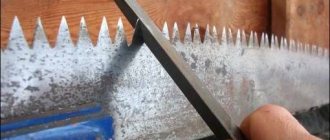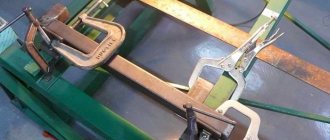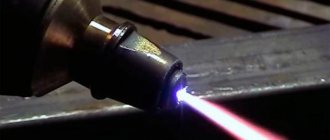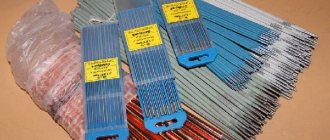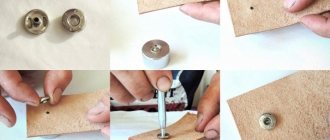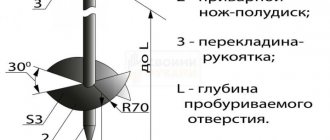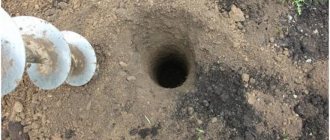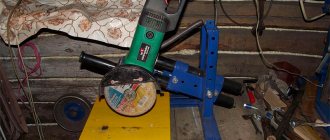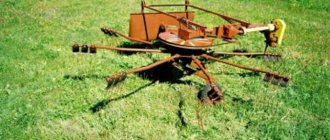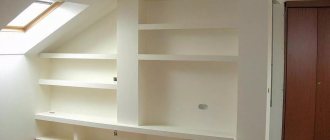You can often hear the opinion that welding pipes is not something too special and, if necessary, even an amateur can cope with such a task. Indeed, at first glance it may seem that this is so. Large surfaces with well-fitted and processed edges - all conditions for the formation of a high-quality seam are met. All that remains is to bring the electrode and...
But here practice begins, which has completely different laws than theory. It turns out that doing this kind of work is very difficult. Especially when it comes to creating a high-pressure pipeline. The slightest defect in the weld seam leads to a breakthrough in the main line. That is why only highly qualified specialists are attracted to such projects.
Selection of electrodes
Equally important for obtaining high-quality seams is the use of proven consumables. Bad electrodes will become an insurmountable obstacle to achieving the desired result. The following brands are considered the best today:
- ANO-21, ANO-24 and MR-3 . AC power required for use. Due to its low cost, consumables are in demand in a wide variety of human activities, including household plots. Such electrodes do an excellent job of welding structures for a private farmstead: gates, greenhouses, canopies, etc. The listed consumables are not suitable for connecting pipes, and especially high-pressure lines;
- SSSI . The high quality cores have earned the praise of professionals. However, electrodes also have negative aspects. For example, they do not allow welding work to be performed at a fast pace. The weld forms slowly and it is very important to maintain a stable arc. Those who have experience with ANO and MR analogues will be able to work with such electrodes;
- LB-52U . Of all the brands under consideration, they are best suited for welding pipes using electric welding. Japanese development is preferable in the implementation of large projects. The electrodes form an even, attractive seam and hold the arc perfectly. Their only drawback is their relatively high cost.
Types of pipelines
Pipelines are divided into types based on the conditions of their use. Basically, the type is determined by the hazardous production facility at which they are used, as well as by the conditions themselves and the environment that passes through them.
The following types exist:
- Main oil, gas and product pipelines;
- Hot water and steam pipelines;
- Internal and external gas pipelines;
- Technological;
- Sewage and water pipelines.
I make pipelines from various materials, mainly: steels and alloys, as well as polymer materials. The article will not consider pipes made of concrete, ceramics and other non-weldable materials.
Basic pipe welding techniques
Connecting parts of main pipelines can be done in different ways:
- Butt weld the pipe . The surfaces to be connected are placed opposite. This is the most common method and is characterized by ease of execution. However, there are also some difficulties. It will be much easier to cope with them if you take into account some nuances. Firstly, it is better to form the welding seam in the direction from the bottom up. Secondly, the metal should be welded to the entire thickness of the pipe wall.
- Overlap . The method can only be used in cases where the surfaces to be joined have slight differences in diameter and one of them fits tightly into the other. this may be a difference in the size of the pipes or a special mechanical treatment of the end part of one of them - flaring.
- Tavrovoe . This method of connection involves the arrangement of surfaces at right angles to each other.
- Angular . The two parts are connected to each other at an angle of less than 90 degrees.
The order of preparatory work
Welding pipes using manual welding will require a number of preparatory steps from you:
- Clean the welding area from dirt and oils.
- For high-quality welding, the pipeline elements must be installed end-to-end and aligned with each other.
- Set the optimal welding mode and install electrodes on the welding machine that meet the technological requirements.
- Before starting welding work, install grounding contacts on the pipes.
- To more reliably secure the pipeline elements to each other, make several tacks around the circumference - small welds that fix the exact position of the elements being welded.
Tips and tricks
Good quality welds are not obtained immediately. Only with time comes experience and the required skill. To ensure the final result is as good as possible, you should follow the advice of experienced experts:
- When using butt or tee methods for connecting parts, it is advisable to use electrodes with a thickness of 2-3 mm. They are the ones who show the best results.
- It is recommended to set the current strength in the range of 80-100 amperes. If overlap welding is performed, this figure can be increased to 120 amperes.
- When filling the weld pool, you should be guided by the height of the weld: it should protrude 2-3 mm above the metal surface.
- If work is carried out with profile pipes (the cross-section is not round, but square or rectangular), then the point connection method is used.
A few words about the point method of joining workpieces. It is also called “tack” and boils down to the fact that small areas are welded on diametrically opposite sides. And only after this a solid seam is placed. The approach eliminates the possibility that one of the parts will “lead away” under the influence of temperature.
TOP 3 methods
The joining method common when laying various pipelines depends on the size and mobility of the parts. There are 3 methods of manual electric arc welding of large diameter pipes:
- coated electrodes;
- electrodes in a protective gas environment;
- argon-arc.
The quality and composition of the material being joined determine the operating modes and current value:
- variable;
- constant reverse polarity;
- constant straight polarity.
Alternating current is used when welding aluminum . Pulsed feed prevents the arc and metal from heating up too much and forming burns.
Reverse polarity, when a minus is connected to the part, gives more heat and power. The metal of the pipe at the junction and the electrode heat up more strongly.
Description
Pipeline welding technology, manual arc welding, provides the best, most durable connection. To protect the seam from oxidation, flux is used - coating the electrode or a gas environment.
When current passes through a steel sheet and an electrode, an electric arc occurs at its end. It begins to warm the edges of the connected pipes and melt them. A weld pool is created from the molten metals of the parts being joined and the electrode.
A worker guides a liquid bath with an electrode, mixing metals and creating a seam. Oxides and gases rise to the surface, forming a film. The slag protects the hot weld from contact with air and sudden cooling.
Instructions
Cleaning the edges before starting processing means avoiding internal defects.
You should check their cutting angle, set and fix it in 3 – 4 places, depending on the diameter. Tack welds are made with the same brand of electrodes that will be used for root weld welding.
You should follow safety precautions: wear special clothing, check the serviceability of the equipment. Turn on the welding machine and set the operating modes.
Preparation
The quality of work depends not only on the brand of electrodes and the professional skills of the performer. An important role in this is played by the preliminary preparation of the surfaces to be welded. Its essence comes down to performing several operations:
- the compliance of the two elements being connected is checked with the requirements of the selected welding method. It is important to take into account that the pipes must not only be of the appropriate diameter, but also have the same wall thickness. Otherwise, it will not be possible to warm up the thick wall well or, conversely, the thin wall will simply melt;
- There should be absolutely no defects on the surfaces being welded. Kinks, cracks and deformations of any kind are not allowed. If neglected, “modest” deficiencies under the influence of thermal expansion will grow into a big problem and lead to the destruction of the structure;
- Under no circumstances should a distortion be allowed in the cut of the workpiece, which will be welded at an angle of 90 degrees. Due to such a seemingly small defect, the seam will eventually be weakened and the likelihood of the joint being destroyed during operation is high;
- the edges are cleaned to a metallic shine. For this purpose, you can use any metal abrasives: brush, sandpaper or power tool;
- During the preparation process, traces of grease, paint, rust and other contaminants are removed from the surface. The most effective cleaners in this regard are chemical solutions.
Hedgehog education
A burr, or urchin, is a hollow formation within a seam or under a layer of spatter . The formation of hedgehogs during pipe welding is a welding defect that has a destructive effect. X-ray illumination detects internal defects, a non-destructive testing method. Most often, burr is formed when welding aluminum. It should be cooked with alternating current, in a jerky method, so that there is no overheating.
To avoid the formation of hedgehogs, you should monitor the gases formed in the bathroom; they must have time to escape. If a stop occurs, you should return 20 - 30 mm, clean the surface of slag and continue, starting to walk along the seam.
You can reduce the amount of agrate by thoroughly cleaning the edges, especially on aluminum. Then rust and dirt will not melt in the bath and contaminate the seam.
To remove tarnish colors without removing the layer with an abrasive wheel, you can use a chemical method. Inox Gel or Stain Clean etching paste is applied to the surface of the pipe. The compositions are very poisonous, you should wear a respirator and gloves and apply with a brush.
How to weld a horizontal joint
Unlike other technologies, there is no need to completely cut the welding edges of non-rotary joints. All actions are performed using arc welding.
It makes sense to leave a slight ten-degree groove, which will allow not to lose the quality of welding seams and simplify the process of combining pipes. A horizontal seam can be made either from right to left or from left to right, choose whichever is more convenient for you.
We recommend layer-by-layer application of narrow seams on horizontal pipes. First, use a welding roller to weld the base of the seam; the diameter of the conductor is taken to be 4 mm.
According to Ohm's law, the current is set in the range of 170-190 A. Perform repeated back-and-forth movements with the conductor until a thread-like welding bead 1.5 mm high is formed at the place where the pipes are combined.
At this point, two coatings are made on the interlayer of the welded joint of the fixed joint, the first is carefully cleaned, and the second is applied to the first, while the conductor produces slight vibrations between the lower and upper edges.
Safety regulations
When starting to connect rotary joints of pipes or non-rotary analogues, you need to know that work of this type has a high level of danger. Therefore, certain requirements must be met.
Butt jointing of pipe products by gas or electric welding must be performed on specially equipped sites that have special equipment, including various means of protection against electric arcs. These elements are distributed so that people present nearby are completely isolated.
To connect tubular products with a large diametrical cross-section and a weight of over 20 kg, it is recommended to use special lifts. The entrance to the site must be cleared; its width cannot be less than 1 m. Operating temperature values in the room must be maintained within +160C. A prerequisite is the presence of a ventilation system and free space.
According to the technology for carrying out work involving the use of welding equipment, all metal parts and elements must be grounded (pro
